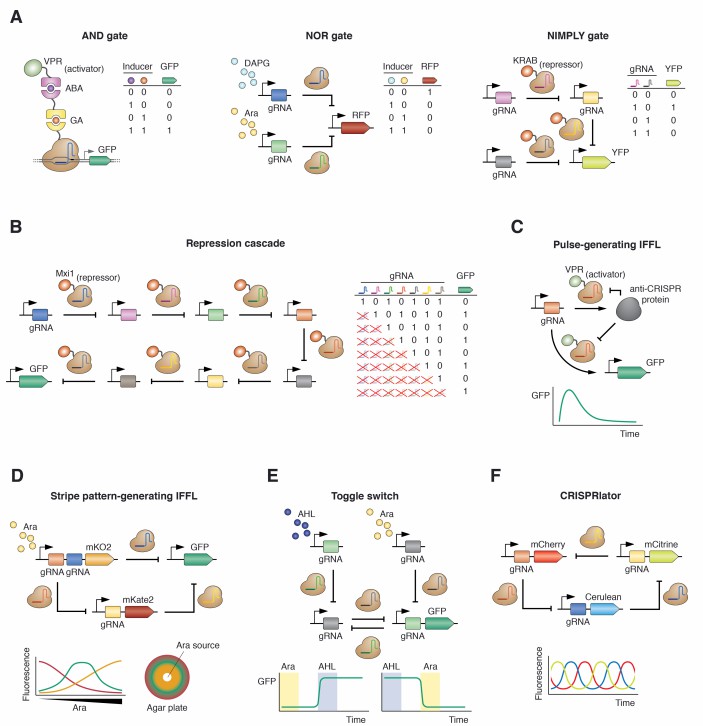Engineering Cancer Cells by CRISPR-based Synthetic Regulatory Circuits
Taking advantage of advanced technology platforms and deep scientific and regulatory understanding in immune-oncology, Creative Biolabs is committed to offering fully integrated engineering cancer cells by CRISPR-based synthetic regulatory circuits for our global clients.
Introduction of CRISPR System
The CRISPR system is a natural defense mechanism that is used to inactivate foreign nucleic acids in bacteria and archaea. When an exogenous nucleic acid invades the cell, its identity is recorded in a specific cluster of the host genome (the CRISPR array) as a short fragment of the invader sequence. This cluster is transcribed and processed into short RNA molecules capable of recognizing invading sequences and directing defense responses against them. Thus, in the subsequent attacks, specific endonucleases associated with this “guide” RNAs will bind to and cut invasion nucleic acid. Foreign DNA (or RNA) is recognized by a combination of two signals: an extension that is fully complementarity to the 5’ region (the ‘spacer’) of the guide RNA, and a short adjacent motif recognized by the endonuclease (called the protospacer adjacent motif, PAM).
CRISPR-based Synthetic Regulatory Circuits
The synthetic regulatory circuit in living cells is an in-depth research field in synthetic biology as they have the potential to advance basic research and realize practical applications in medicine. In biology, synthetic gene circuits mainly include transcriptional, post-transcriptional, and/or post-translational regulation, containing components like regulatory DNAs, noncoding RNAs, and proteins such as TFs. The combination of these elements can generate pathways that perform defined functions through a series of gene expression and regulatory switches, thereby achieving the relevant intercellular communication function.
CRISPR-based synthetic regulatory circuits work on several levels of life, containing transcription and translation. In both eukaryotic and prokaryotic cells, inactivated CRISPR endonuclease and endoribonuclease are used as genetic switches to activate or repress gene expression at transcriptional and translational levels. To date, several CRISPR-based synthetic regulatory circuits have been built in bacteria, yeast and mammalian cells, many of which offer highly efficient applications.
 Fig.1 CRISPR-based synthetic gene circuits.1
Fig.1 CRISPR-based synthetic gene circuits.1
Engineering Cancer Cells by CRISPR-based Synthetic Regulatory Circuits
To speed up the development of cancer immunotherapies, Creative Biolabs specializes in engineering cancer cells by CRISPR-based synthetic regulatory circuits to help our clients meet the program requirements. Equipped with state-of-the-art facilities and experienced immune-oncology experts, we are confident in offering in vitro and in vivo platforms to provide reproducible custom assays for our clients all over the world.
Creative Biolabs is confident in providing strategies for engineering cancer cells of high quality to meet demands. We provide the following items, including but not limited to:
If there is any query, please contact us for more details.
Reference
-
Santos-Moreno, Javier, and Yolanda Schaerli. "CRISPR-based gene expression control for synthetic gene circuits." Biochemical Society Transactions 48.5 (2020): 1979-1993. Distributed under Open Access license CC BY 4.0, without modification.
For Research Use Only | Not For Clinical Use


 Fig.1 CRISPR-based synthetic gene circuits.1
Fig.1 CRISPR-based synthetic gene circuits.1
 Download our brochure
Download our brochure

